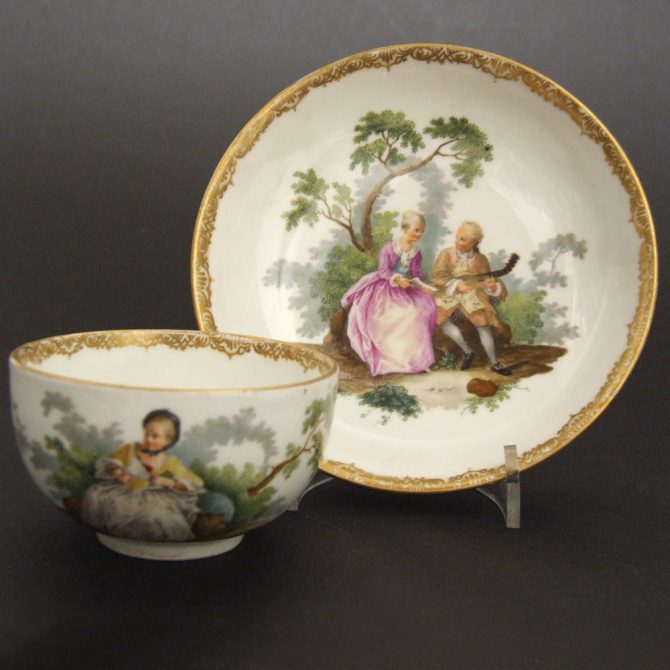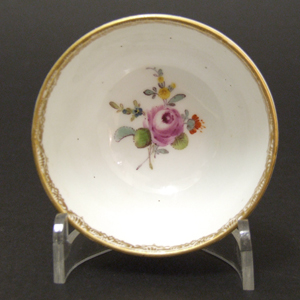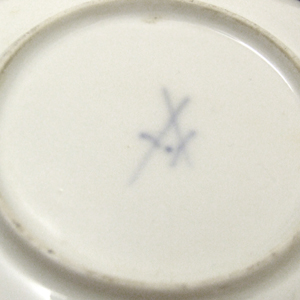
MEISSEN, Academic Period 1763 – 1774 German Hard-Paste Porcelain
An 18th Century Meissen Porcelain Teacup and Saucer, Academic Period 1763 – 1774. The Decorated with Watteau Style Figures. The Base with a Crossed-Swords Mark with a Dot Between the Hilts, for the Meissen Porcelain Factory of the Academic Period.
SOLD
- Condition
- Perfect.
- Size
- Diameter of Saucer : 12 cm (4 3/4 inches)
- Provenance
- N/A
- Stock number
- 22207
Information
Academic Period Meissen :
Meissen`s Academic Period, commonly referred to as the Dot Period (1763 - 1774) due to the mark which included a dot between the hilts of the crossed-swords. This period comes directly after the Seven Years War (1756-63), which concluded with the treaties of Hubertusburg and Paris in 1763. It was a time when the factory and indeed much of Europe was recovering from this protracted conflict. It resulted in some 900,000 to 1,400,000 deaths.
Watteau Influence :
Jean-Antoine Watteau (1684–1721) was a French painter whose brief career spurred the revival of interest in colour and movement (in the tradition of Correggio and Rubens), and revitalized the waning Baroque idiom, which eventually became known as Rococo. He is credited with inventing the genre of fêtes galantes: scenes of bucolic and idyllic charm, suffused with an air of theatricality. Some of his best known subjects were drawn from the world of Italian comedy and ballet. Watteau`s design appear on a wide range of 18th century European porcelain, the designs were used many years after his death in 1721. They were used as inspiration and were also copied directly at Sevres and Meissen as well as many other factories during the period of c.1750 to 1770. After this period French scenes of this type gave way to new styles, especially the Neo-Classical. It is worth mentioning that not all of the designs in the style of Watteau were by him, there were many other highly accomplished French artist working in this style at the time.

